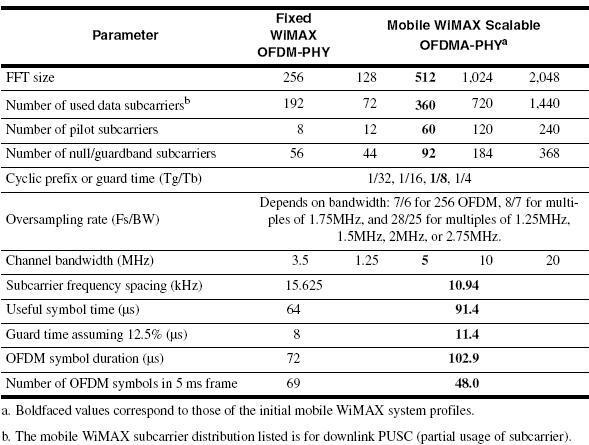The fixed and mobile versions of WiMAX have slightly different implementations of the OFDM physical layer. Fixed WiMAX, which is based on IEEE 802.16-2004, uses a 256 FFT-based OFDM physical layer.
Mobile WiMAX, which is based on the IEEE 802.16e-20055 standard, uses a scalable OFDMA-based physical layer. In the case of mobile WiMAX, the FFT sizes can vary from 128 bits to 2,048 bits. Table below shows the OFDM-related parameters for both the OFDM-PHY and the OFDMA PHY. The parameters are shown here for only a limited set of profiles that are likely to be deployed and do not constitute an exhaustive set of possible values.
Fixed WiMAX OFDM-PHY: For this version the FFT size is fixed at 256, which 192 subcarriers
used for carrying data, 8 used as pilot subcarriers for channel estimation and synchronization
purposes, and the rest used as guard band subcarriers.6 Since the FFT size is fixed, the subcarrier spacing varies with channel bandwidth. When larger bandwidths are used, the subcarrier spacing increases, and the symbol time decreases. Decreasing symbol time implies that a larger fraction needs to be allocated as guard time to overcome delay spread.
As Table below shows, WiMAX allows a wide range of guard times that allow system designers to make appropriate trade-offs between spectral efficiency and delay spread robustness. For maximum delay spread robustness, a 25 percent guard time can be used, which can accommodate delay spreads up to 16 μs when operating in a 3.5MHz channel and up to 8 μs when operating in a 7MHz channel. In relatively benign multipath channels, the guard time overhead may be reduced to as little as 3 percent.

